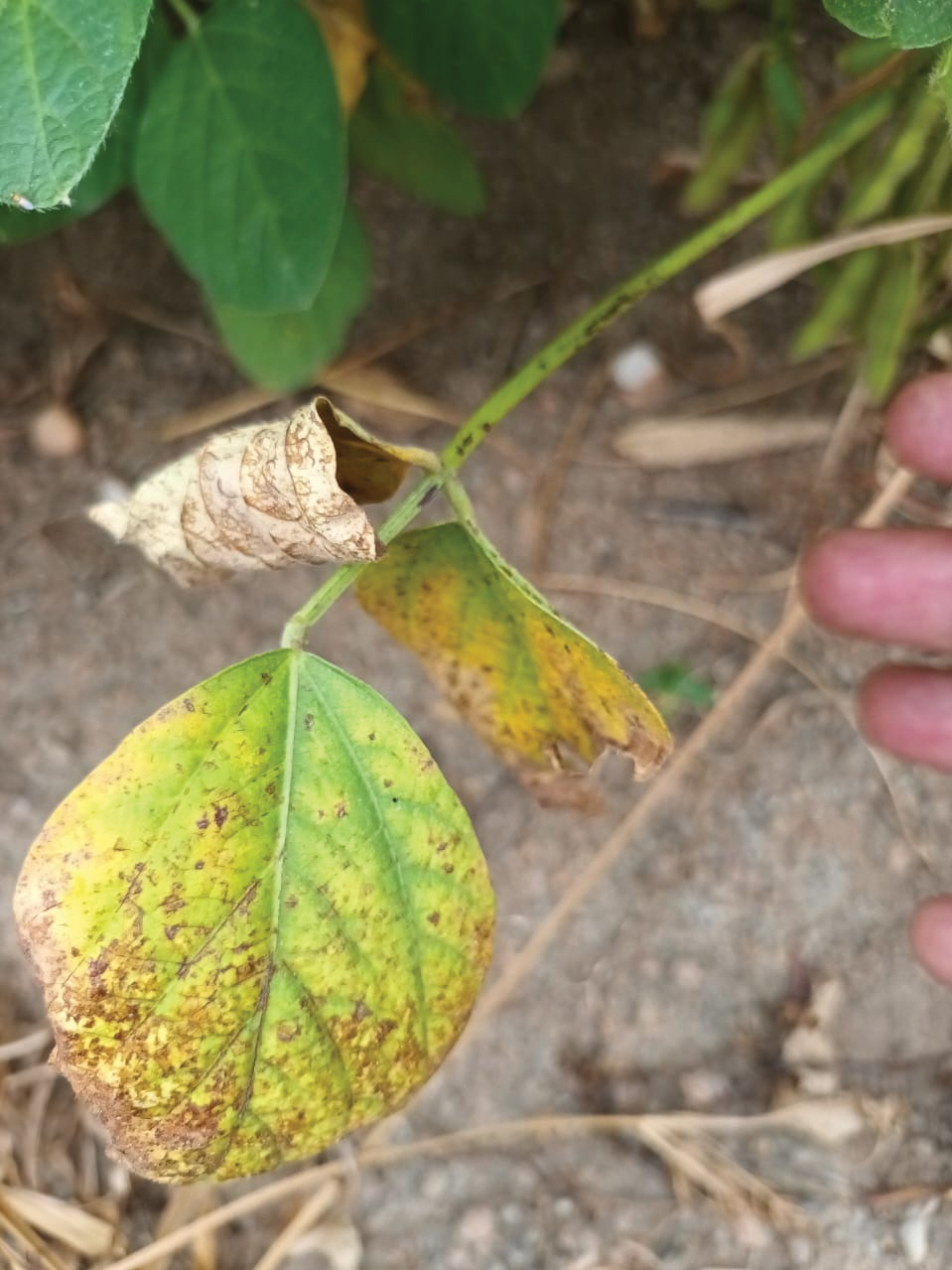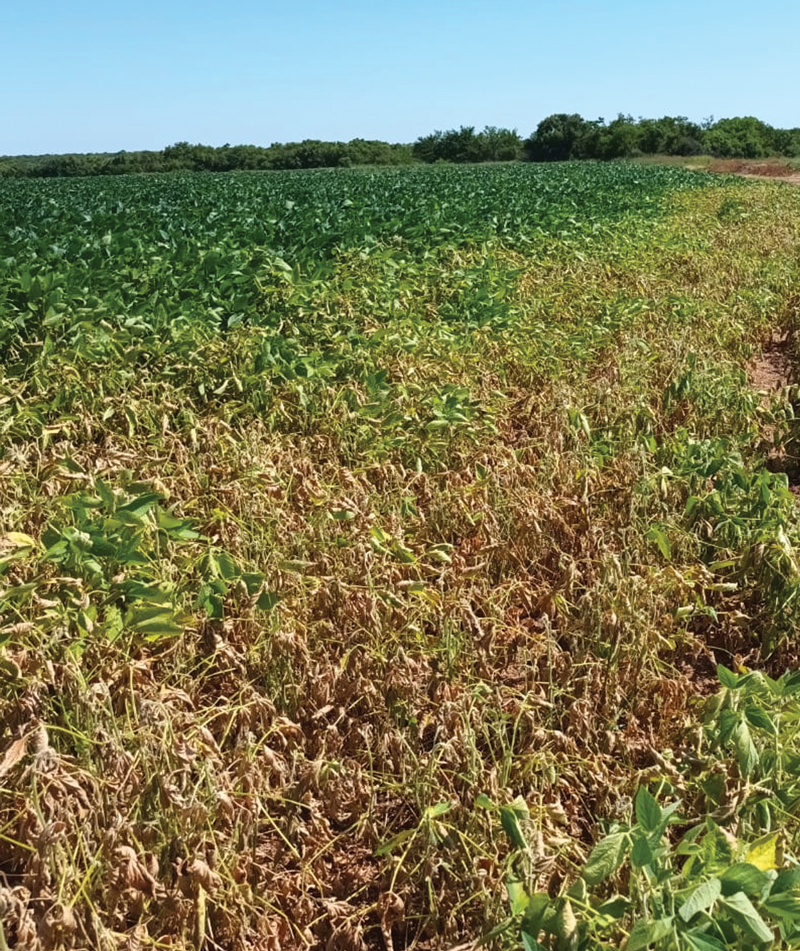April 2025
SEPTORIA BROWN SPOT (ALSO KNOWN AS SEPTORIA LEAF SPOT) OCCURS IN ALMOST ALL SOYBEAN PRODUCING AREAS AND IS CURRENTLY A POTENTIAL DISEASE THREAT TO SOYBEAN PRODUCTION IN SOUTH AFRICA. THE DISEASE CAN CAUSE SYMPTOMS ON LEAVES THAT MAY DECREASE the SOYBEAN YIELD IN SEASONS CONDUCIVE TO THE DISEASE’S DEVELOPMENT.
This common fungal disease in soybeans can can cause yield losses of up to 80%. The disease is caused by a fungus known as Septoria glycines, which survives on infected leaves and stem residues that are left in the field after harvesting. The fungus can also survive in or on the seeds. Correct identification of the disease is critical in developing appropriate disease management strategy.
EPIDEMIOLOGY
SYMPTOMS
It appears as small, irregular, red-brown spots on both sides of the leaves. Individual spots merge to form large blackish-brown irregular blotches. As time progresses, leaves will turn yellow, die eventually and fall prematurely.
Symptoms first appear at the lower leaves and progress to the upper canopy. They first appear as small brown dark spots which eventually grow and merge to form big irregular brown areas on the leaves. These brown areas appear as yellow patches on the sides of the leaves.

Symptoms of Septoria brown spot are clearly visible on these leaves.

Severely damaged fields showing patches caused by Septoria brown spot disease on the edges of the field.
DISEASE MANAGEMENT
An infection of Septoria brown spot during pod formation can result in severe yield losses. Therefore, disease management should occur as soon as the disease symptoms are detected to avoid severe damage to the soybean plants.
The disease affects most plants in the legume family – therefore, rotation with non-legumes and deep tillage could minimise infection. In severe incidences, the application of foliar fungicides can reduce the impact of the disease. Although damaged plants may recover after the application of fungicides, severely damaged plants die.
Farmers are encouraged to frequently monitor and scout their fields for diseases. While all soybean cultivars are susceptible to Septoria brown spot, some are more susceptible than others. Therefore, farmers need to choose soybean cultivars that are or show some level of resistance against the disease.
For more information on this topic, contact Moses Ramusi at moses.ramusi@gauteng.gov.za.
Publication: April 2025
Section: Pula/Imvula
Author: MOSES RAMUSI AND ZUZUMUZI BUTHELEZI, BOTH FROM THE GAUTENG DARD AND DR GODFREY KGATLE, RESEARCH COORDINATOR, GRAIN SA